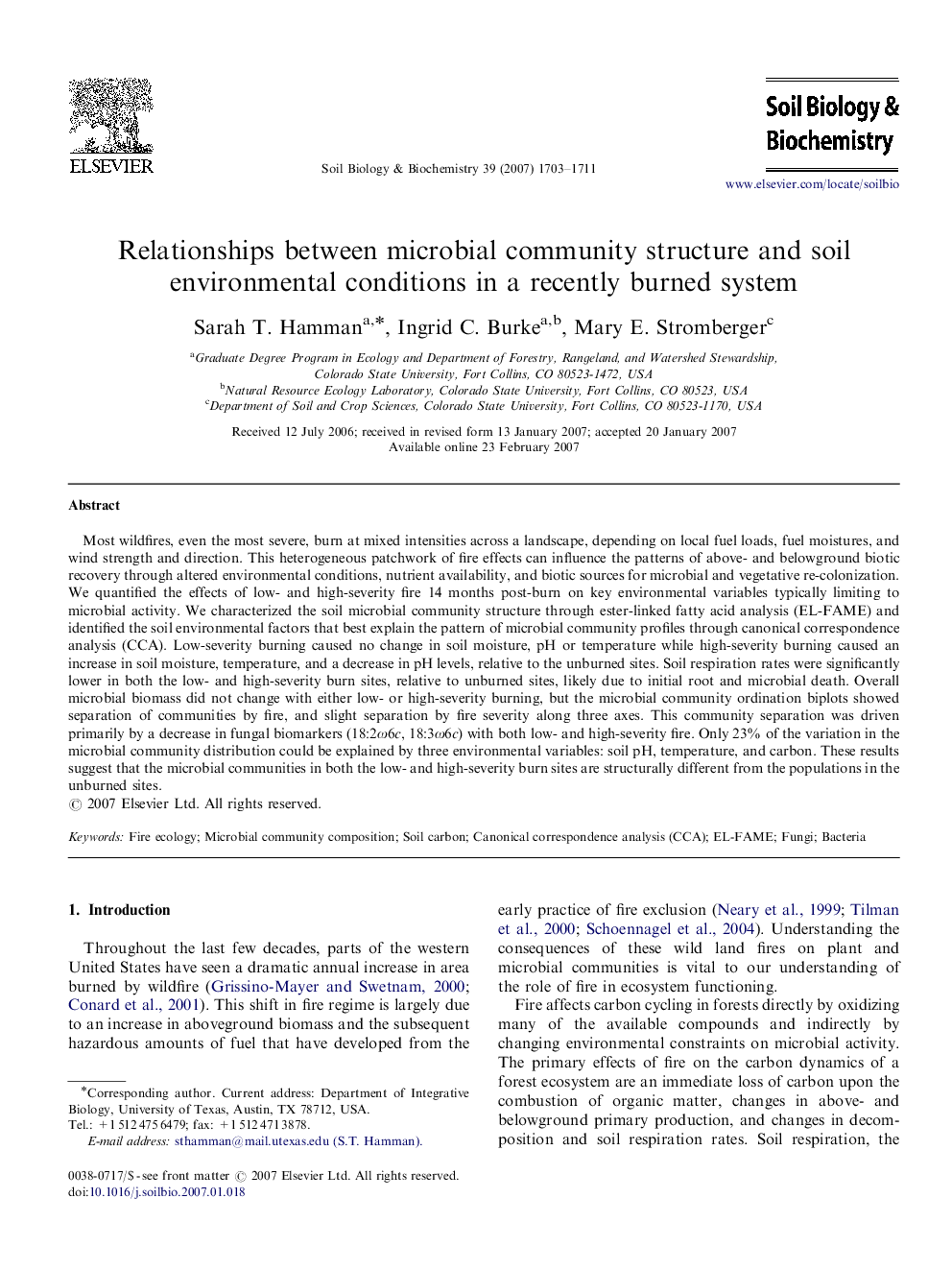| کد مقاله | کد نشریه | سال انتشار | مقاله انگلیسی | نسخه تمام متن |
|---|---|---|---|---|
| 2026235 | 1070023 | 2007 | 9 صفحه PDF | دانلود رایگان |

Most wildfires, even the most severe, burn at mixed intensities across a landscape, depending on local fuel loads, fuel moistures, and wind strength and direction. This heterogeneous patchwork of fire effects can influence the patterns of above- and belowground biotic recovery through altered environmental conditions, nutrient availability, and biotic sources for microbial and vegetative re-colonization. We quantified the effects of low- and high-severity fire 14 months post-burn on key environmental variables typically limiting to microbial activity. We characterized the soil microbial community structure through ester-linked fatty acid analysis (EL-FAME) and identified the soil environmental factors that best explain the pattern of microbial community profiles through canonical correspondence analysis (CCA). Low-severity burning caused no change in soil moisture, pH or temperature while high-severity burning caused an increase in soil moisture, temperature, and a decrease in pH levels, relative to the unburned sites. Soil respiration rates were significantly lower in both the low- and high-severity burn sites, relative to unburned sites, likely due to initial root and microbial death. Overall microbial biomass did not change with either low- or high-severity burning, but the microbial community ordination biplots showed separation of communities by fire, and slight separation by fire severity along three axes. This community separation was driven primarily by a decrease in fungal biomarkers (18:2ω6c, 18:3ω6c) with both low- and high-severity fire. Only 23% of the variation in the microbial community distribution could be explained by three environmental variables: soil pH, temperature, and carbon. These results suggest that the microbial communities in both the low- and high-severity burn sites are structurally different from the populations in the unburned sites.
Journal: Soil Biology and Biochemistry - Volume 39, Issue 7, July 2007, Pages 1703–1711